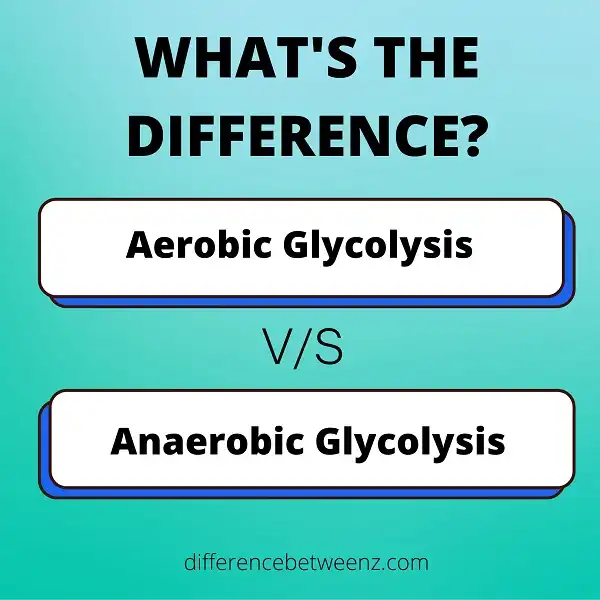When it comes to understanding what happens during glycolysis, there are two main types of glycolysis: aerobic and anaerobic. So, what’s the difference between aerobic and anaerobic glycolysis? Let’s take a closer look.
What is Aerobic Glycolysis?
Aerobic glycolysis is the process of breaking down glucose in the presence of oxygen to produce energy. This process occurs in the mitochondria, the powerhouses of the cell. Aerobic glycolysis is a more efficient way to produce energy than anaerobic glycolysis, which does not use oxygen. The end products of aerobic glycolysis are pyruvate and ATP. Pyruvate is then transported into the mitochondria, where it is used in the Krebs cycle to produce more ATP. Aerobic glycolysis is an important process for cells that need a lot of energy, such as muscle cells.
What is Anaerobic Glycolysis?
Anaerobic glycolysis is the process of breaking down glucose in the absence of oxygen. It occurs in two stages: the production of pyruvate and the fermentation of pyruvate. In the first stage, enzymes convert glucose into two molecules of pyruvate. In the second stage, yeast or bacteria convert pyruvate into ethanol or lactic acid. Anaerobic glycolysis is not as efficient as aerobic glycolysis, but it does not require oxygen and can occur at a much faster rate. For this reason, it is an important energy source for cells that are unable to obtain oxygen, such as red blood cells and skeletal muscle cells. Anaerobic glycolysis also plays a role in the body’s response to strenuous exercise, providing a quick source of energy for muscles that are working harder than they can obtain oxygen.
Difference between Aerobic and Anaerobic Glycolysis
Aerobic glycolysis is the process of breaking down carbohydrates in the presence of oxygen to produce energy. Aerobic glycolysis is a more efficient process than anaerobic glycolysis and produces more ATP (a molecule that stores energy). Aerobic glycolysis occurs in the mitochondria, while anaerobic glycolysis occurs in the cytoplasm.
Anaerobic glycolysis is the process of breaking down carbohydrates in the absence of oxygen to produce energy. Anaerobic glycolysis is a less efficient process than aerobic glycolysis and produces less ATP. However, anaerobic glycolysis does not require oxygen and can therefore occur in tissues with low oxygen levels.
Conclusion
Aerobic glycolysis is the process that uses oxygen to break down glucose and produce ATP. Anaerobic glycolysis does not use oxygen and instead produces lactic acid as a by-product. The main difference between aerobic and anaerobic glycolysis is the amount of time it takes for each process to complete. Aerobic glycolysis is a slower process, but it does not produce harmful by-products like lactic acid.


